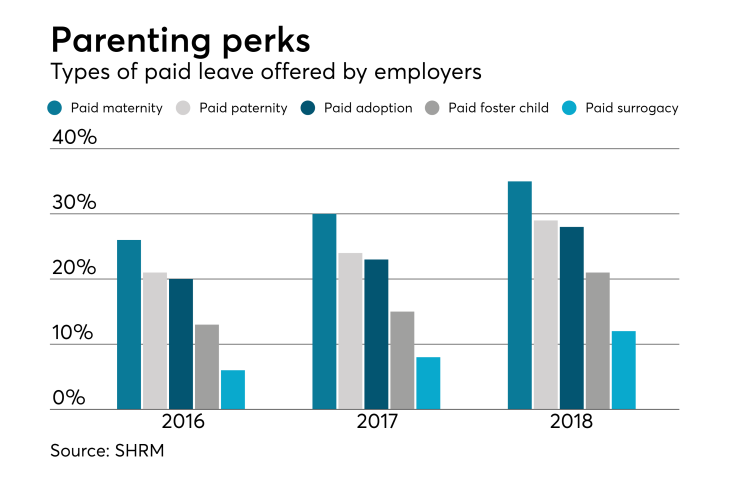The paid parental leave boom continues to grow among employers, as more and more continue to implement or expand on their policies for new parents.
The latest example in the hot trend: Austin Peay State University, which announced recently it will now offer six weeks of paid leave for both new mothers and fathers employed at the university. The policy will begin for children born or adopted after Jan. 2, 2019.
The Society for Human Resource Management’s
See also:
The Clarksville, Tennessee-based university’s policy is for full-time faculty or full or part-time staff who have been employed by Austin Peay in a regular position for at least 12 months prior to the birth or adoption of a child. Prior to this, employees had to use sick- or unpaid time off.

“This was a significant step forward for APSU, as the policy and funding has been in the works for more than two years,” says Bill Persinger executive director, public relations and marketing at the university. “This creates better alignment with parental leave policy, which allows parents up to four months leave, by providing six additional weeks of paid leave, allowing parents of newborns or adopted children more ability to spend more time at home with their child.”
A bevy of organizations and legislative bodies have been amping up their paid leave policies, including the international law firm
Paid leave is a hot button topic to attract and retain talent, Kathleen McLaughlin, a senior vice president at Walmart,
Meanwhile, other companies have updated their parental leave programs to be gender-neutral. For example,
“It’s turning into a candidate-driven market, so employers are offering incredibly competitive benefits,” explains Trent Burner, SHRM’s vice president of research. “Employees, particularly millennials, are calling out for unique benefits that help with work-life balance, and more employers are listening by increasing their paid parental leave programs.”





